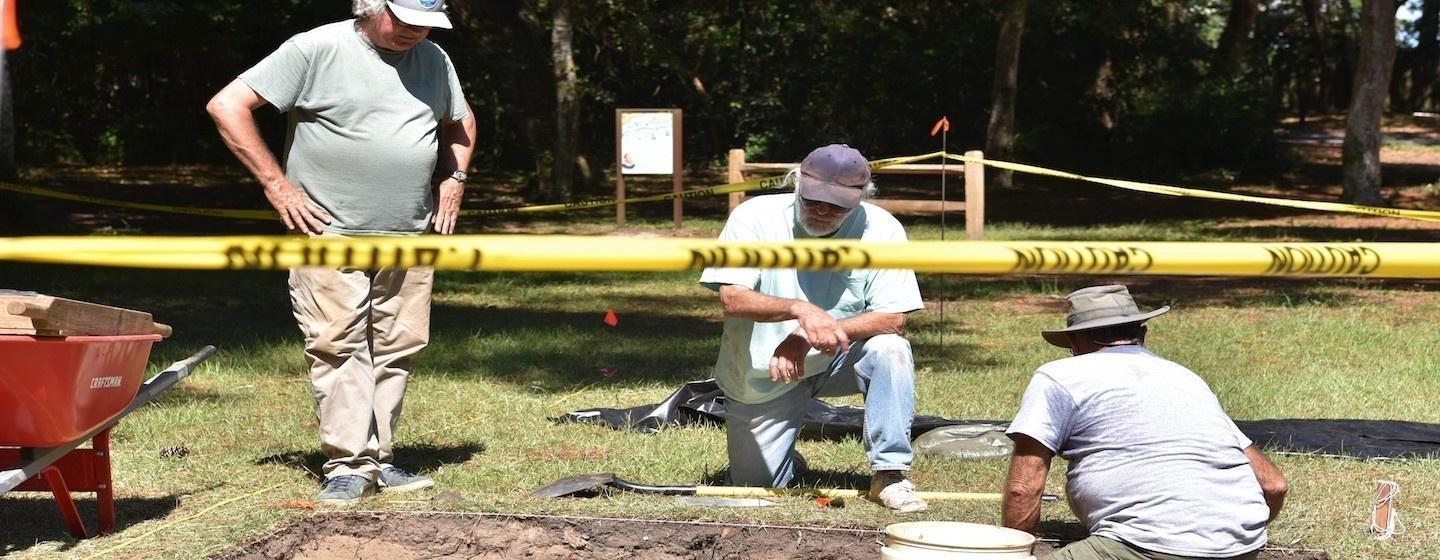New Dig, New Clues at Fort Raleigh Historic Site


Archaeologists working with the First Colony Foundation have found further evidence of a metalworking lab and of late 16th century English life near the Fort Raleigh National Historic site.
However, the goal of this dig was not to find evidence of the “Lost Colony.” The discoveries from this excavation will help the First Colony Foundation understand the workings of a metallurgy workshop built near the fort.
Archaeologists have identified pieces from Iberian olive jars that were commonly found on ships in the 1600s, a gun flint and a piece of what may be part of the assay equipment used in the laboratory.
While most of the focus on the Roanoke Colony is on the famed “Lost Colony,” a settlement of 117 men, women and children that disappeared mysteriously after last being seen in August, 1587, English explorers and soldiers came to Roanoke Island for varying periods of time starting in 1584.
The two earlier expeditions were financed by Sir Walter Raleigh and other investors. The most significant was led by Captain Ralph Lane, whose party arrived on Roanoke Island in 1585 and stayed about one year to explore the area.
While the party was made up mostly of military personnel, the primary purpose of the voyage was to gather information about the resources found in the area.
It was in this period that the laboratory of scientist Thomas Harriot and metallurgist Joachim Gans, was built.
From earlier excavations by the National Park Service, the original locations of earthworks at the settlement fort were discovered. It was first thought those earthworks were the location of the fort. It now appears the earthworks were protective mounds for the laboratory and metallurgy workshop.
Earlier excavations found evidence of charcoal making and a brick kiln nearby.
“It all points to this being a worksite near the settlement,” said Eric Klingelhofer, co-director of The First Colony Foundation. “Nobody lived here.”
The Foundation began its search for the colony’s scientific lab began in 2017. The process has been slow. Not only is archaeology a painstakingly slow process to begin with, the Fort Raleigh site has been disturbed by former roadbeds, sidewalks, and earlier excavations.
The current work is to re-excavate specific locations that were either missed in earlier digs to may have been misinterpreted.